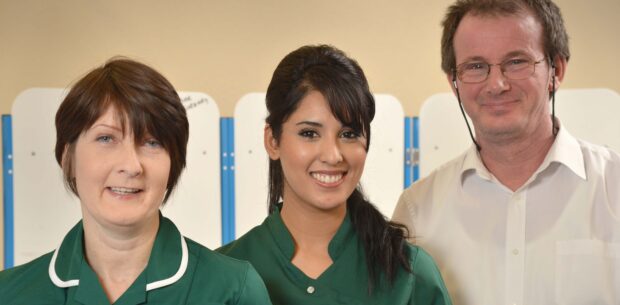I am the programme manager for the Dorset and Wiltshire Abdominal Aortic Aneurysm (AAA) Screening Programme. I am also an assessor of learners studying for the Level 3 health screener diploma.
I have completed the certificate in assessing vocational achievement (CAVA) qualification. So far, I have assessed 5 new screeners in my programme as they have worked through the diploma.
When I first opened the e-portfolios for the first 2 new screeners, I was daunted by the amount of work involved compared to the previous training method.
Top tips for assessors
So how have I found it? Well, here are a few tips that have helped me.
Firstly, I would recommend looking at the support information your approved centre gives you. The suggested evidence was my go-to tool and is invaluable.
I created a spreadsheet for my trainees and broke down each unit into what they needed to do independently, for example a workbook or a reflective piece. Next, I looked at the things we could do together, such as the professional discussions, or questions and answers. Finally, I reviewed the parts that were down to me, such as observations.
Once all this was set out I looked at the professional discussions for the units, cross-referenced them against the suggested evidence and worked out where one discussion could be used to help towards another unit.
For the holistic observations in clinic, there is nothing to stop you taking time to have a discussion with the new screener as well as observing them. It does take some forward planning but breaking it down certainly made it less daunting for me.
I found it better to record the professional discussions rather than taking notes, which you then have to write up. It is a massive time saver but it took me a while to start doing this.
I found that the programme-specific clinical units can all be completed during the practical training with just a little bit of tweaking. Questions, discussions and observations are all small additions that can be added to a training clinic.
Keeping staff motivated

You need to know your staff. Some are happy to work through the diploma without much prompting, while others are less inclined to put the time in. However, once they start seeing the percentage bar moving up on their e-portfolio, it gives them a sense of achievement.
I would suggest doing the observations at times when the learning is going flat as the amount of unit criteria that can be marked means the percentage bar leaps up.
Another piece of advice is not to upload mandatory training certificates first because if these are assessed, the percentage bar will increase. The bar only increases when the first piece of evidence for an assessment criterion is uploaded. This means that when the second piece of evidence is uploaded, the percentage bar does not increase, which can be disheartening for the new screener.
Seeing new screeners complete the diploma really has a feelgood factor for them, the team and the assessor. Good luck. Embrace it.
PHE Screening blogs
PHE Screening blogs provide up to date news from all NHS screening programmes. You can register to receive updates direct to your inbox, so there’s no need to keep checking for new blogs.